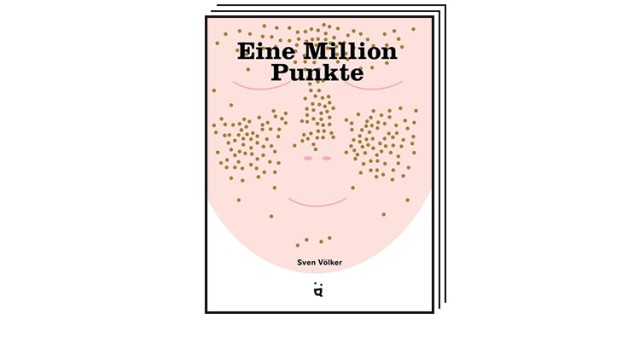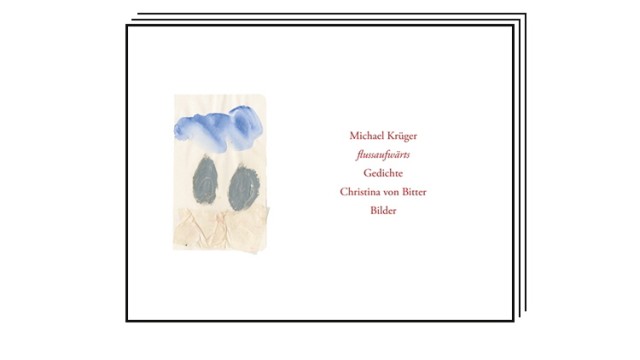Arwed Messmer’s photos of the turning point
The most remarkable photo book of the past year shows the photographer himself as a child in the first picture, taken by his father on a visit from Baden-Württemberg to the GDR to see the Deutsche Reichsbahn locomotives. The others show what the later guest student photographed in the East during the years of reunification. Arwed Messmer is now known as an artist primarily for his work with image archives. Under the title “Deep Debris Clearance” he is now presenting his own photo archive from that period, which seems to be characterized less by departure than by demolition. Another editorial feat from Spector Books from Leipzig, where they use the eyewitness perspective of West Germans in the East 1990f. has uncovered a real treasure. (In literary terms, this also applied to “The Last Year – Records from an Invalid Country” by Martin Gross.) Peter Richter
Another big day from the small publisher Spector Books: Arwed Messmer’s “Deep Debris”.
(Photo: Spector Books)
Symphony by Michael Haydn

Come together again: the Haydn brothers.
(Photo: music production Dabringhaus and/MDG)
Musically, the old year isn’t quite over yet, so there’s a lot to add. For example a symphony by Michael Haydn. To this day, in the public eye, he is at best Joseph Haydn’s little brother. Michael Haydn has an extensive oeuvre of his own. In addition to the Salzburg church music, including the German High Mass and the Schrattenbach Requiem, there are at least 41 symphonies, as well as chamber music and solo concerts, including a horn concerto with which he caused a sensation in Vienna in 1762. He is connected to Wolfgang Amadé Mozart not only by the number of symphonies he composed, but also by a personal friendship. Eyed with suspicion by his father, Leopold Mozart, the close collegial bond between Michael Haydn, 20 years his senior, and the young Mozart remained strong. As an artist, however, Michael Haydn was in the shadow of Mozart, who achieved world fame through his career in Vienna, and that of his older brother Joseph at the court of Prince Esterházy. He offered Michael Haydn a position as deputy court music director, which he declined. The “Austro-Hungarian Haydn Philharmonic” under the direction of Enrico Onofri has now musically united both brothers with Symphony No. 39 and the introduction to the oratorio “The Penitent Sinner” by Michael and Symphony No. 96 with the prelude to “Philemon and Baucis” by Joseph Haydn. There is no need to claim that the works of Michael and Joseph are of equal importance. They are not, Joseph has too much routine and experimental experience for that, and perhaps also more mental freedom in his sound thinking. On the other hand, Michael Haydn also shows high symphonic qualities that are still impressive today, more than 200 years later. Even if Michael Haydn’s typical musical tone, which is more personal and humane than the imperial gesture of the Viennese classics, hardly comes through here, you can still recognize the composer’s flexible handwriting. Helmut Mauro
Picture book: A million points

Author Sven Völker points out that good ideas can spread exponentially.
(Photo: Helvetiq Verlag/Helvetiq Verlag)
One tree, two trees, four apples. The picture book “One Million Points” (Helvetiq Verlag) begins as simply as for small children. But wow, how quickly it gets huge: from the number 32 onwards you have to count the circles with your finger, from 64 onwards: only confetti. The dots become smaller and smaller while the numbers continue to double. Until at the end, on a one meter long fold-out page, they are just tiny pixels. But the highlight is that they are really there, each printed individually. The Berlin artist Sven Völker wants to illustrate the principle of exponential growth, on which many of the big problems of our time are based – climate change or the corona pandemic. He says he also sees the idea as the solution: good ideas can spread exponentially. Comforting, at the beginning of these 365 new days. Kathleen Hildebrand
Poetry: Michael Krüger and Christina von Bitter

The sculptor and painter Christina von Bitter illustrates the poetry of Michael Krüger.
(Photo: Verlag Kleinheinrich)
It is strange that poems, strangely enough, cause shyness in many who are otherwise quite fond of literature, which is often justified by lack of understanding, even incompetence, as if special training was necessary to read poetry. In fact, some statements by well-known poets about how rarely a good poem comes together in a poet’s life may have contributed to this view that one needs a kind of secret key to be able to open the gate to the mysterious garden of poetry. As an author and publisher, Michael Krüger fought against this hesitation throughout his life. Also with the argument that reading poems takes much less time and in them the expressive power of a writer is concentrated much more directly than in novels. This immediately applies to his own lyrical production. And so in the magnificent volume “upriver” (Kleinheinrich Verlag, Münster 2023. 116 pages, 40 euros) he wanders along Lake Starnberg, looks at the constantly changing weather, sees mirror worlds in the clouds. He visits his neighbor, the donkey Nepomuk, and observes his activities as if the animal were commenting on this or that event. Or Krüger sends poem greetings to friends and responds lyrically to phone calls. The sixty poems were written in the Corona years 2021 and 2022 and speak of seclusion, introspection and, fortunately, communicative thoughtfulness. Christina von Bitter’s pictures were also taken in Corona times from 2020 to 2021, airy, blown views, color impressions, lines and symbols that respond wonderfully to Krüger’s lyrical statements. This creates an intimate conversation between the two that transcends artistic boundaries, without one or the other directly referring to what is painted or written. In these texts and images, which are arranged in landscape format, you can wander back and forth between reading and viewing, between visual discoveries and lyrical surprises, with ease and with growing pleasure, and in the process become, so to speak, the third member of the group: “Silence also has a beautiful face today.” Harald Eggebrecht
Podcast: What everyone reads

If books could kill, this podcast is called. It doesn’t have to come to that.
(Photo: IBCK)
What is called “debunking” in English, the debunking of popular misconceptions, is a speaking attitude that is not to be liked. Through the mocking tone that is part of the genre, Michael Hobbes and Peter Shamshiri’s desire to read carefully and with concentration quickly comes through in the podcast “If books could kill”. Popular bestsellers, they call them “airport books”. Titles that you pick up from stacks as you pass by so that you can quickly find out what everyone is thinking about politics, love, the end of humanity on a flight. This can save you time, because Hobbes and Shamshiri reconstruct the argumentation of the books in detail and therefore fairly before stating their objections and contradictory facts. They have already read more than forty books in the year since the podcast started: so that we don’t have to. Marie Schmidt

